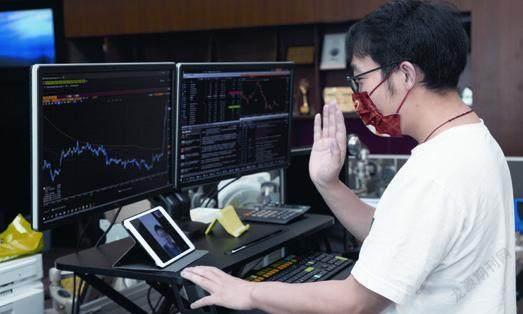Hitting the Brakes
2022-05-29
On May 4, the U.S. Federal Reserve (Fed) announced it would hike its benchmark interest rate by 50 basis points and begin reducing its holdings of Treasury securities and agency debt and agency mortgage-backed securities on June 1 to cope with high inflation. In an interview with Beijing Review reporter Li Xiaoyang, Zong Liang, chief researcher with Bank of China, the fourth largest bank in the world, commented on the move’s potential impacts. Edited excerpts of his views follow:
Beijing Review: Do you think the Fed’s plans to tighten monetary policy can really solve the issues facing the U.S. economy?
Zong Liang: There are many reasons behind high inflation in the U.S. A major one is continued loose fiscal and monetary policies, coupled with a disruption of the global supply chain caused by the COVID-19 pandemic and geopolitical conflicts. It’s hard to curb the price rise by merely hiking interest rates.
The U.S. consumer price index, a major gauge of inflation, rose 8.5 percent year on year in March, hitting a four-decade high. The Fed’s move is just a drop in the bucket.
The consideration to ensure economic growth and financial stability will affect the pace of rate hikes. Raising interest rates too quickly would risk tipping the U.S. economy into recession; while raising the rates too slowly would lead inflation to spiral out of control. With the U.S. national debt reaching over $30 trillion, a rapid appreciation of the dollar, plus overly aggressive interest rate increases, could probably lead to a sovereign default. However, the U.S. will still be more proactive in terms of monetary policy adjustments than other economies given the special global status of the dollar and the country’s geopolitical influence.
Currently, the U.S. economy is at the risk of stagflation (a situation in which the inflation rate is high, the economic growth rate slows, and unemployment remains steadily high). Its economic growth slowed down in the first quarter of 2022, with GDP declining at a 1.4-percent annualized pace. But household spending and fixed business investment remained strong over the same period. The U.S. job market will see a growing participation rate, while the increase of the number of employed people will decelerate, leading to a slight rise in the unemployment rate. If the interest rate hike and more similar moves fail to bring a large amount of capital back to the U.S. and the economic growth remains sluggish amid high inflation, the U.S. economy might encounter stagflation.
How will the Fed’s interest rate increase affect the global economy, and emerging economies in particular? Will it lead to a global recession?
This move does have a widespread impact. Since the U.S. dollar is a major international currency, the Fed’s decision will tighten global liquidity and greatly affect the global economy. As the World Bank projected in April, global GDP growth may drop to 4.1 percent in 2022, down 1.4 percentage points from 2021. Among the economies of the Group of 20, the real GDPs of India, the U.S., Saudi Arabia, the Republic of Korea and Turkey have already exceeded pre-pandemic levels, while those of the EU, Australia, Canada and Japan are close to pre-pandemic levels.
The hike will help control inflation and asset price bubbles in the long term, but a higher interest rate for one-year fixed deposits may lead to U.S. financial market fluctuations—turbulence, even. Furthermore, with the progressing normalization of the Fed’s monetary policy, interest rate lifts and balance sheet runoff are likely to trigger prolonged and significant stock market corrections. We can see this trend from the fact that U.S. stocks fell for two consecutive days after a major rally on May 4. The NASDAQ Composite Index fell 5 percent on May 5, the largest one-day drop since June 2020.
On the other hand, several emerging economies have already begun to adjust monetary policies to curb soaring inflation. As these markets are less resistant to risks of capital outflow and exchange rate fluctuations, they are more sensitive to the Fed’s monetary policy shift and tend to preemptively hike interest rates. With the tightening of global liquidity, several emerging markets, such as Turkey, Argentina and Chile, will face intertwined political and economic risks and have balance of payment difficulties—potentially resulting in sovereign debt crises. The worst scenario will see a global financial crisis starting in these countries.
The Russia-Ukraine conflict has driven up energy prices as well as aggravated economic fire hazards within the U.S. Russia’s counter-sanction measures in the energy sector will complicate the choice between inflation and economic growth for European countries and the U.S. In view of this, the Fed is likely to hike interest rates in more moderate manner.
What are the interest rate hike’s effects on China? How should China cope with these to ensure financial stability amid a global economic slowdown, the pandemic, and the Russia-Ukraine conflict?

The Fed’s move will affect China’s monetary policy, capital flow and renminbi exchange rate, but only slightly. Unlike some developed economies, China has created a moderately loose credit environment with a prudent monetary policy, rather than massive stimulus measures. Its inflation is basically under control. However, changes brought about by the hike still require attention amid the pandemic, downward economic pressure, and complex geopolitical landscape.
To ensure steady economic growth, China needs to adopt a monetary policy in line with the domestic situation and keep liquidity at a reasonable and abundant level. Its controllable inflation and adequate commodity market supplies are favorable for the introduction of related policies. The central bank’s approach of giving play to the role of monetary policy instruments in adjusting both the aggregate and the structure also provides a powerful guarantee.
China also needs to keep an eye on the changing patterns of capital flow and maintain the stability of renminbi exchange rate. Historically, after the Fed hiked interest rates, some emerging economies would encounter severe challenges stemming from capital backflows into the U.S. Nevertheless, international capital destinations are now diversified, and the jeopardies of holding U.S. dollar-denominated assets amid the Russia-Ukraine conflict have already emerged. The AsiaPacific region has the potential to become an important destination for investment. Overseas investors are optimistic about China’s economic development, and the Regional Comprehensive Economic Partnership is expected to play a key role in attracting foreign investment to the Chinese market.
China upholds the path of peaceful development. With the Russia-Ukraine conflict and ongoing pandemic, China’s global role is becoming even more prominent. It should enhance ties with neutral international organizations, promote the BRICS countries(Brazil, Russia, India, China, South Africa) and other emerging markets and developing countries to play a larger role in world affairs, and reinforce cooperation with other countries and regions. It needs to accelerate the internationalization of the renminbi and throughout this process mitigate risks associated with fluctuations of major Western currencies. BR
